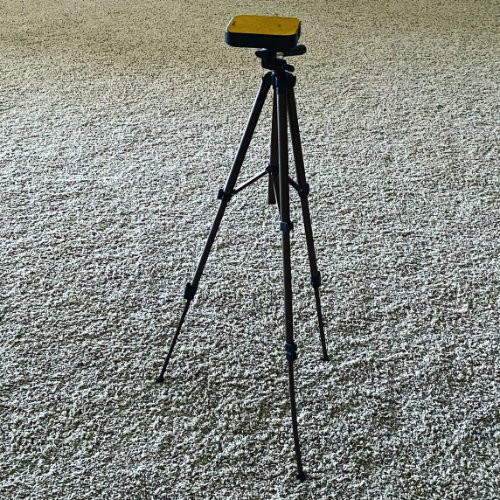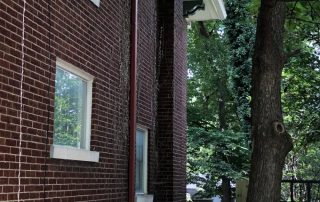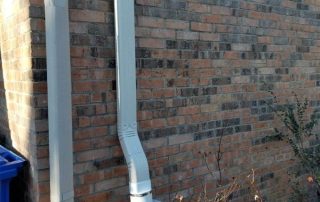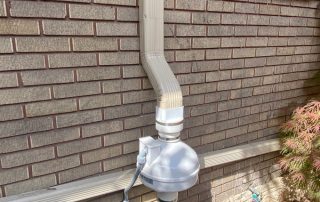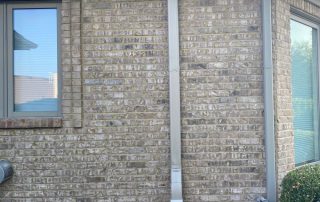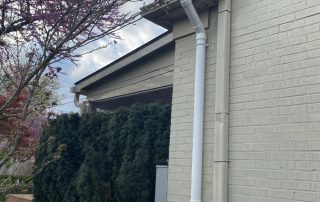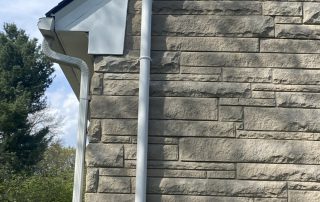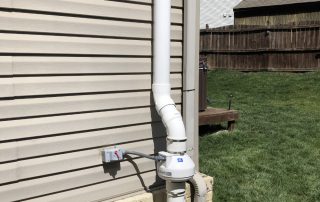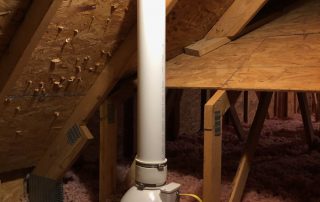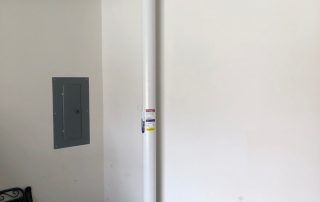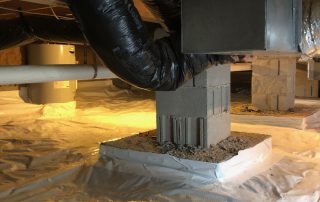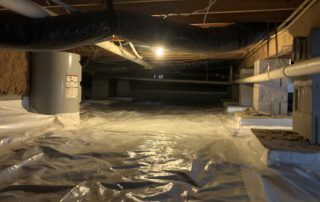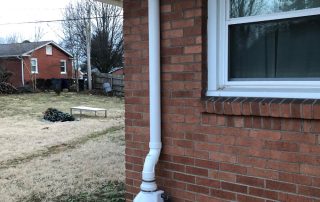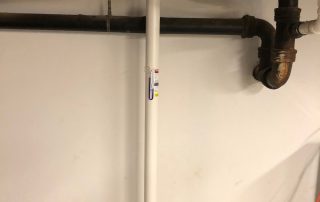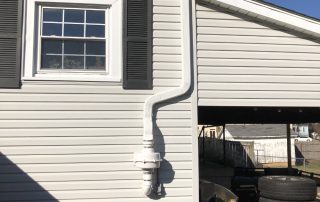Dependable communication, scheduling, and know how are just the start.
We understand the headaches Radon problems can cause in real estate transactions, that’s why we’re designed for lightning fast communication with the ability to act within your closing’s timeline.
What You Need To Know About Radon.
Buying or selling a house is stressful enough without having to worry about radon, but it should be on your checklist!
Homeowners who put their house on the market want a fast, trouble-free sale, and buyers want to know that the house they’re purchasing is safe. If a house is on the market, most buyers will request a radon inspection and if an inspector does find elevated levels of radon, don’t panic or despair! It doesn’t have to be a deal-breaker, and Radon Delete has the solutions to keep your real estate transaction on track. Buyers and sellers can work together with Radon Delete to make sure that mitigation is complete and thorough, making the house safe for all future occupants.
Some federally insured mortgage programs, such as the Federal Housing Administration (FHA) and Housing and Urban Development (HUD), require that radon tests and mitigation are done before a house is bought or sold with their mortgage guarantee.
The Environmental Protection Agency (EPA), the U.S. Surgeon General and the American Society of Home Inspectors (ASHI) also strongly recommend both checking for and mitigating any radon problems before a sale. Most states require disclosure of radon levels, and strongly suggest that radon testing and mitigation should be part of any real estate transaction. With so much of your family’s health and financial investment at risk, radon testing and mitigation should be a must item on your “to-do” list!
TEST YOUR HOME FOR RADON
Before you put your house on the market, we can provide fast and accurate radon testing. If high levels are found, we can install a mitigation system that will resolve the problem and give your house a passing grade from any inspector! Just filling in cracks won’t fix your radon problem anymore than filling cracks would solve a water seepage problem. Radon Delete can accomplish true radon mitigation and reduce radon to safe levels by attacking radon at the source of emanation.
Additionally, having Radon Delete install a radon mitigation system in your house shows that you are a smart, responsible homeowner. Being able to show a prospective buyer that you have taken the time and trouble to ensure safe levels of radon is a positive selling point for your house.
INSTALL A RADON MITIGATION SYSTEM
If you are a buyer and find the house of your dreams, test it for radon before you close the deal. If there are elevated levels of radon, don’t worry, you don’t have to keep looking at other houses! Since radon is directly tied to rock and soil conditions, any house in the same area will also be at risk for the same radon levels.
Radon Delete can install a mitigation system that will provide safe levels and eliminate the risks of radon, no matter what home you choose. Be real estate savvy! Be safe! Protect your family’s health and your real estate investment.
Contact Radon Delete to make radon mitigation part of your real estate agreement!
Radon & Real Estate FAQs
You have tested your home for radon, but now what?
If you; have tested your home for radon and confirmed that you had elevated radon levels, 4 picocuries per liter in the air (pCi/L) or higher, our guidance can help you:
- Select a qualified radon mitigation contractor to reduce the radon levels in your home.
- Determine an appropriate radon reduction method.
- Maintain your radon reduction system.
Radon reduction systems work. Some radon reduction systems can reduce radon levels in your home by up to 99 percent.
Most homes can be fixed for about the exact cost as other common home repairs. However, your costs may vary depending on the size and design of your home and which radon reduction methods are needed.
Get a quote from one or more qualified radon mitigation contractors.
The answer is yes! It can pose a serious health risk to your overall health and especially the respiratory system. If you’re exposed to Radon’s excessive level for an extended period, you could have higher chances of developing lung cancer. According to the EPA Radon is the number one cause of lung cancer among non-smokers in the U.S.. This is a silent killer, and you can’t figure out its effects until it’s too late.
Here are many ways to test your home or a building and begin the mitigation process.
If you doubt that your building has a Radon problem, then the best option is to go for Radon testing. You can find a professional and reliable company for the testing and mitigating process. They can better help you in getting rid of it, depending on the concentration.
It’s a naturally occurring radioactive gas from the natural breakdown of uranium (radioactive decay). Radon is typically found in soil and igneous rock, and sometimes in water as well. It can be found across the U.S., especially in central Kentucky. Radon quickly dilutes when it releases into the air. As a result, it seeps into buildings through gaps, cracks, and holes.
Natural Sources of Radon
There are multiple natural sources of Radon; some of them are as follow;
- Uranium Ores: It’s found in many soil deposits globally.
- Shales: It’s a sedimentary rock that is formed from clay and mud.
- Igneous Rocks: Rocks that are formed from lava or magma cooling (graphite).
- Phosphate Rock: it contains a higher amount of phosphate level, commonly found in clay.
- Metamorphic Rocks: rock that forms due to the transformation of other rocks forms (marble).
Limestone is also listed down in Radon’s natural sources, but we can’t accept a high level of Radon produced by its decay. An important thing to note is Radon doesn’t result from the decay of natural sources but through different manufactured structures.
Although Radon is primarily found in outdoor air, it becomes more of an issue when building through the basement walls or floor. This is because it usually moves up through the ground to the air above and into your building through cracks and other holes in the foundation. As a result, your home can easily trap Radon inside, where its concentrations can then build up.
Radon in Drinking Water
If the drinking water is exposed to any level or amount of Radon, it may still be considered dangerous for your health. Yes, if the drinking water source is in contact with Radon containing soil, it can easily dissolve in the water. From there, it could enter your home. A standard safe limit is 2.6pCi/L, and if the Radon level goes beyond this, it can pose a severe health threat.
Yes. Radon levels in a home, under typical operating conditions, will commonly reach a steady state with mild fluctuations about 12 hours after the house is closed up. Vacant houses will experience factors that may drive radon levels to lower or higher than normal averages, but the effect cannot be predicted. If the house is opened up for ventilation purposes prior to the test, it should then be closed up and a test started no sooner than 12 hours later. If short-term radon testing is being used, then the house has to be kept closed except for normal entry and exit, as if it were the winter heating season. It is recommended that the home’s heating and cooling system be operated normally for the season. If the average indoor level is 4 pCi/L, then it is expected that the radon level will be near to that average after 12 hours of a house being closed.
The homeowner of a house can test their home prior to listing the home for sale. If the homeowner does perform a radon test, most if not all states will require that the test result be disclosed on the whole house disclosure form you will fill out with your realtor. If the initial test by the homeowner comes back less than 4 pCi/L, potential buyers may still request an additional radon test as part of their home inspection. If an initial radon test by the homeowner is 4 pCi/L or greater, the issue will need to be addressed in the real estate transaction. A buyer may want to have a confirmatory test conducted. With an average radon level of 4 pCi/L or greater, it is recommended that a radon mitigation system be installed prior to placing the house on the market, to bring the radon level to less than 4 pCi/L.
The EPA recommends that all houses, regardless of what radon zone the house is located in, be tested for radon during point of sale. The most common procedure for radon testing during real estate transactions is for the potential buyer to request the radon test as part of the overall home inspection. The radon test is generally a separate service and must be requested. If the radon test is 4 pCi/L or greater, the EPA recommends the potential buyer negotiate with the seller to have a radon mitigation system installed with the stated goal of bringing the radon level in the home below 4 pCi/L.
Yes, Radon Delete is a Certified Radon Mitigation Contractor.
Radon Delete is certified by the National Radon Proficiency Program (NRPP). Radon Delete’s Radon specialists use only Continuous Air Monitors to accurately test Radon Levels in your home. We stand behind our work and include a 5 Year Warranty on all Radon Mitigation Systems.
We guarantee indoor Radon levels at or below 4 pCi/L. Our Radon mitigation systems can decrease radon levels in your house by as much as 99 percent.
There are many ways Radon can get into your house including drains, sump pumps, basement floor cracks, basement wall cracks construction joints, loose pipe fittings and exposed soil. Radon might also enter the air of a home from well water.
Because radon is a gas, it can easily spread from the ground into the air in a home. The main method in which radon enters a home is through the basement floor including crawl spaces.
Yes. The EPA estimates that over 20,000 preventable deaths in the U.S. can be attributed to exposure to radon decay products. That is twice the amount of drunk driving fatalities each year.
Alpha particles released by radon decay products are the main driver in damage to healthy lung tissue. Smoking combined with radon exposure is especially risky.
You can’t see, smell, or taste radon. However, it still might be an issue inside your house. Radon is a gas atom, and it features a half-life of only about 4 days. Radon gas is completely natural and it forms during the decay of uranium-238, an element that is naturally present in our soil.
This level should not be a deterrent to buying a home. In fact, any level should not be a deterrent to buying a home because radon can almost always be reduced in a home, and to levels below the EPA guideline of 4. Many times post mitigation tests are in the range of 1-3. The level of 2 would be a very good result for a home that had a mitigation system installed to reduce the level from a much higher number. As long as the issue is resolved in the real estate transaction, the radon level should not be a deterrent to buying any home. Achieving lower radon levels when the starting concentration is between 2 to 4 is not likely to be something a radon contractor would guarantee under typical conditions for a set price.
The EPA publication Home Buyer’s and Seller’s Guide to Radon details several aspects related to radon testing during real estate transactions. You can find information on radon, the protocols for radon testing during real estate transactions, and guidance as to how to interpret your radon test results.
Reviews

I cannot say enough positive about our experience with Radon Delete. They were recommended by a friend who had a great experience with them. They were knowledgeable, helpful, professional, and friendly. They stayed in touch and willingly answered all our questions. They did a professional job with cheerful attitudes. We could not be happier with their service.

I cannot speak more highly of Wilson and his team. I had a difficult situation with a large crawl and I wanted only one system. Other radon companies kept saying I needed two systems. Wilson and his crew made it work. I went from radon levels of upper 40s to 0.5. I had about 5 companies come through and Wilson and Radon Delete with his HVAC experience and mechanical design training were far and away the most qualified!

We had a fantastic experience with Radon Delete. The entire process from quote through install and follow up was seamless. Great customer service accompanied by a high level of craftsmanship is hard to find these days and these guys outperformed expectations at every turn. They were very thoughtful on how to make the system look as atheistically pleasing as possible and our radon levels were cut down dramatically after just a few hours of running the system.

We had a fantastic experience with Radon Delete. The whole team was punctual, professional, and informative. Couldn’t recommend them enough!

Radon Delete was fabulous! Wilson communicated frequently and professionally, and was upfront about costs and expectations. The staff did a great job of mitigating radon in our home with a clean, effective solution which matches the aesthetic of our house. Thank you!

Wilson, Nathan and Nick did a phenomenal job. Knowledgeable, capable, and talented in all aspects of the job and were truly a pleasure to work with.

Couldn’t be happier with the installation of our radon mitigation system. Thanks Wilson! I highly recommend them.

